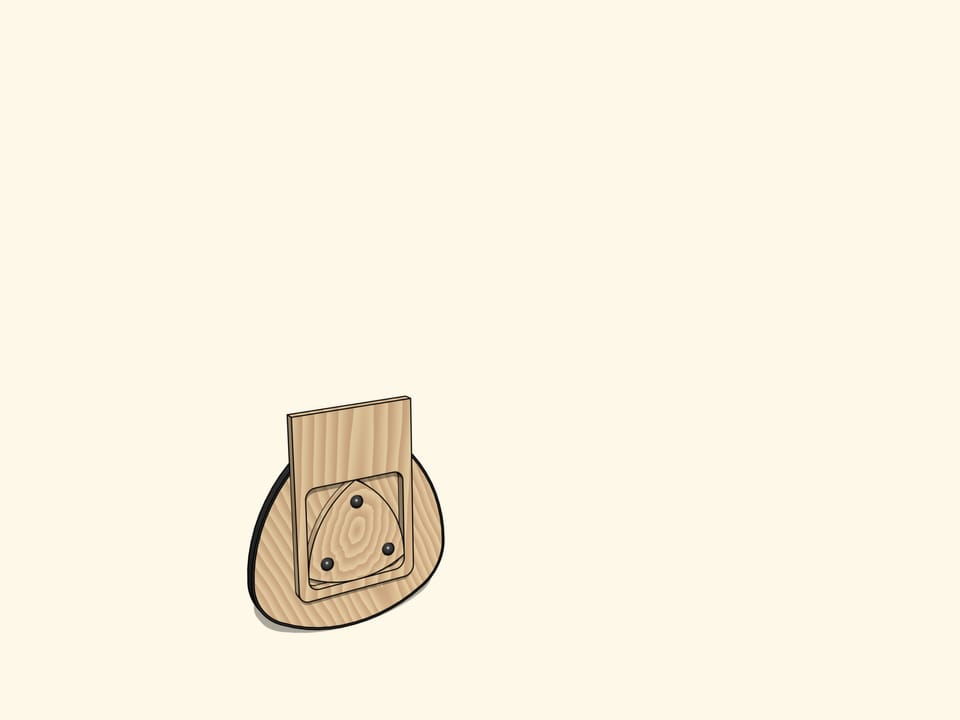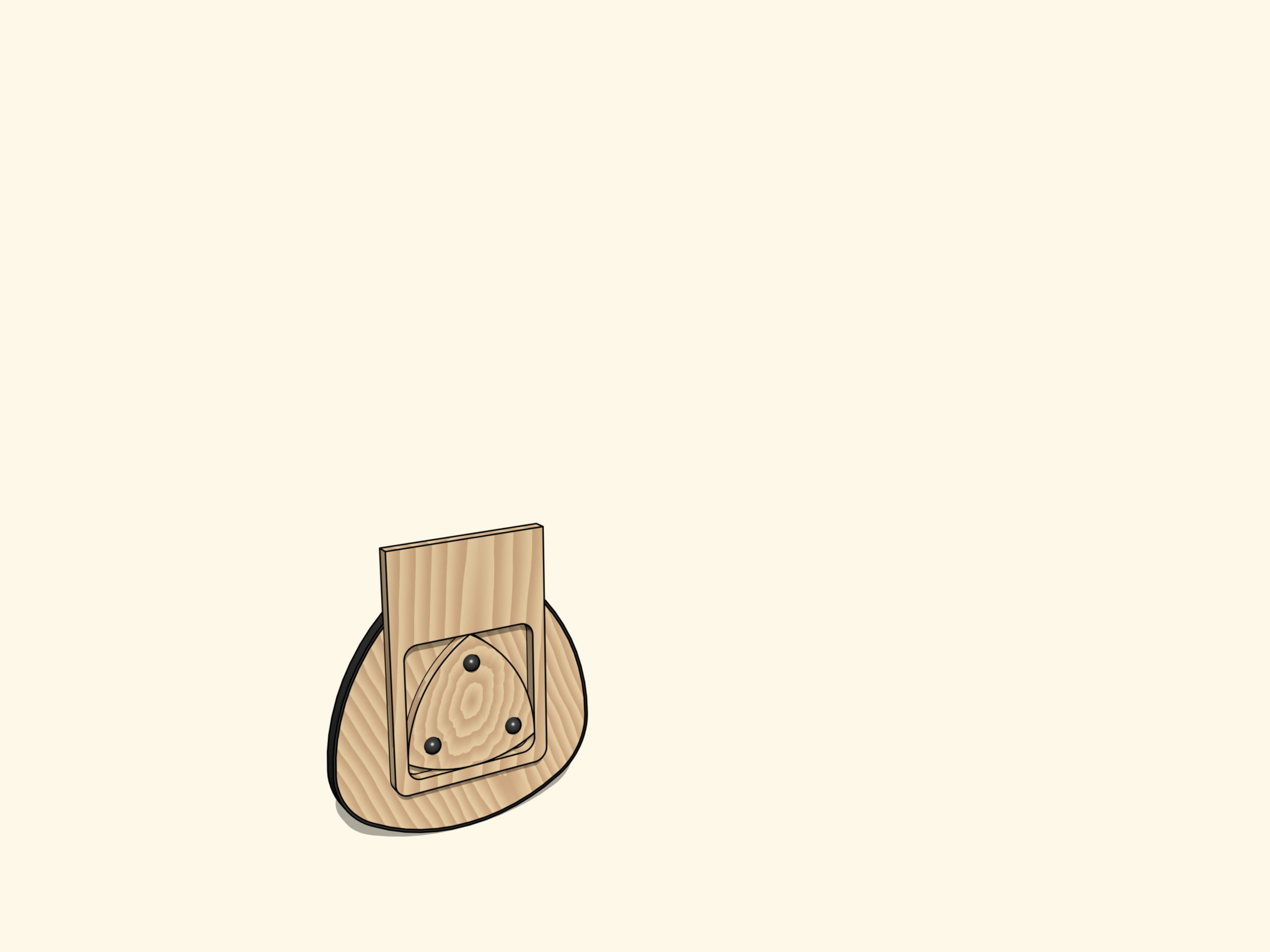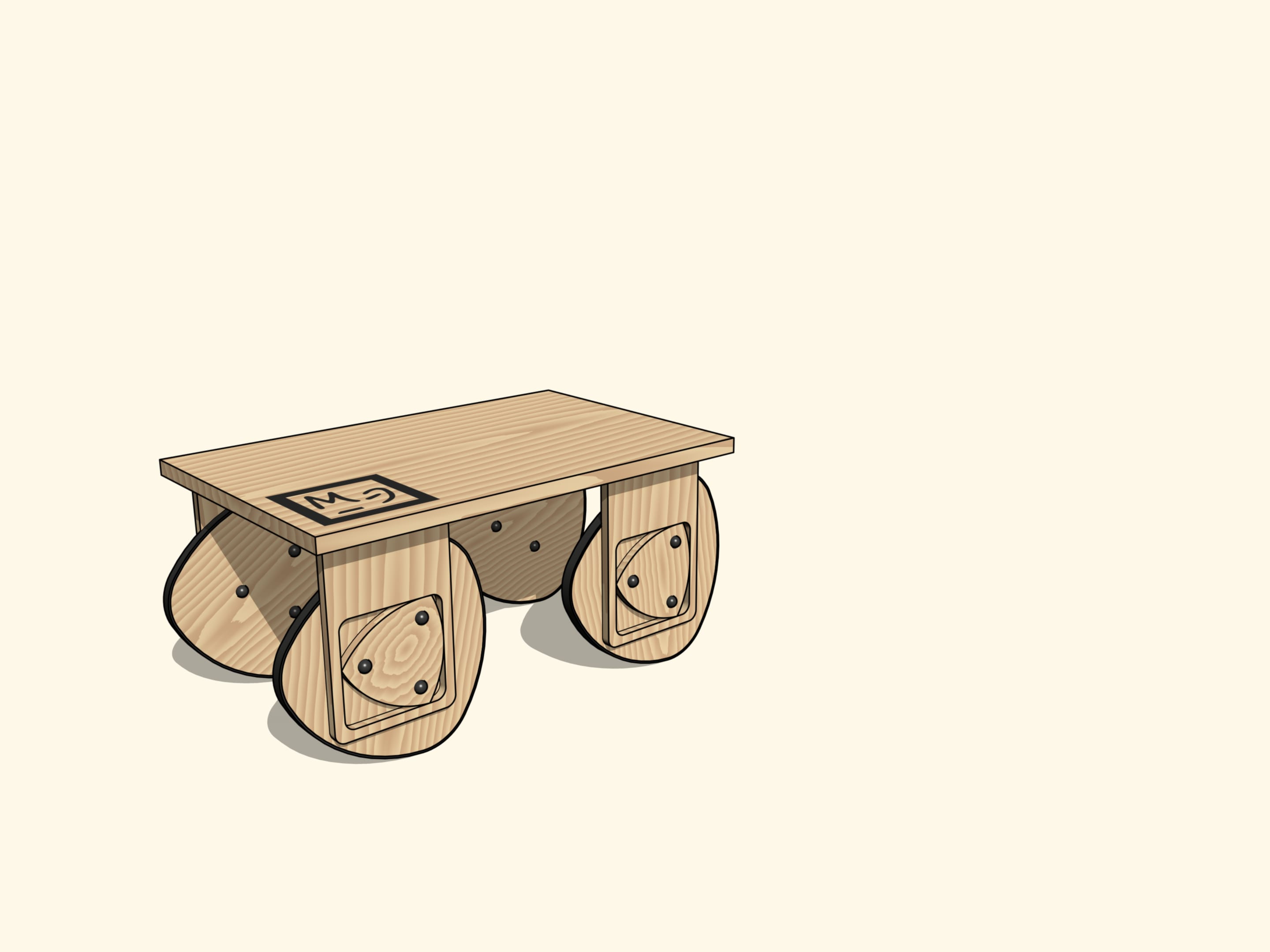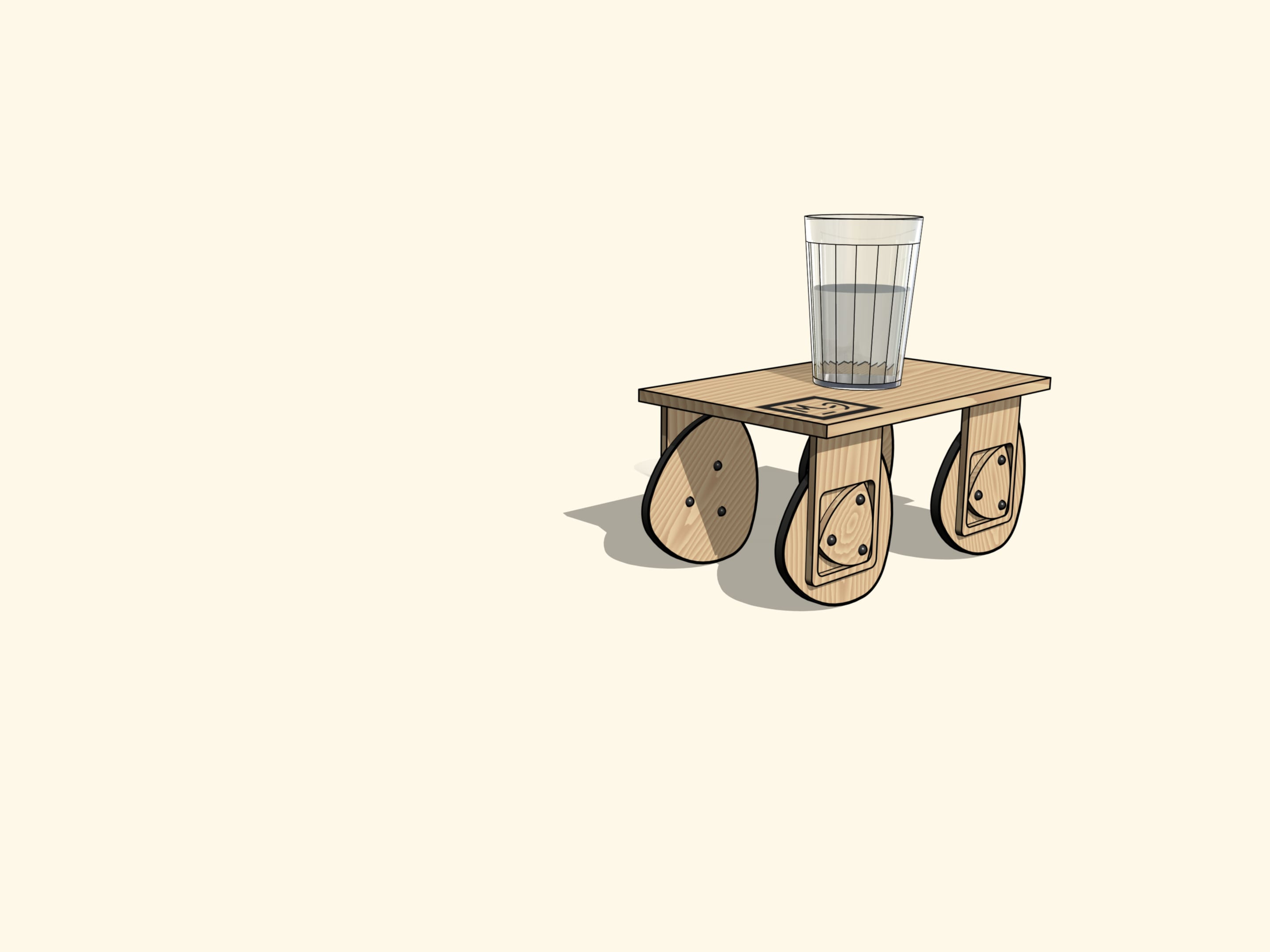The Reuleuaux triangle is a plane figure of constant width, one can rotate it between two fixed parallel lines and it will be tangent all the time to both of them.
Add another pair of parallel lines tangent to the Reuleaux triangle and orthogonal to the old ones. Thus, we obtain a square. If one rotates the Reuleaux triangle in a special way, it will remain inside the square and touch all the sides at every moment.
To be more precise, one should consider a square with slightly rounded corners. The Reuleaux triangle will appear to be the rotor of minimal area, the figure that after any rotation is tangent to all the sides and there is such a figure with smaller area.
The circle and the Reuleaux triangle are not the only figures of constant width. One may build a figure of constant width on any regular odd n–gon. There exist also non-symmetric figures of constant width.
In fact, there are infinitely many figures of constant width constructed on a regular triangle and not similar to each other or the Reuleaux triangle.
Extend some side of a regular triangle from the vertices at the same distance. Rotate the obtained segment around one of the vertices and watch the trajectories of its ends. A big and a small arc we obtain will be parts of a curve bounding a constant width figure. Rotate the segment around the other two vertices.
The resulting curve consists of three arc of the bigger radius and three of the smaller. One can prove that it bounds a figure of constant width. And it doesn't matter how far we step away from the vertices, just the distances should be equal.
If one rotates the Reuleaux triangle inside the square, the associated red curve will rotate between two parallel lines that are fixed with respect to the square.
Thus, this is a way to build a suspension of a non-round wheel with a red shaped border.
Taking four such suspension one can construct a carriage that will move without rocking at all!
To check that there is non shaking at all, put as drivers teach us, a glass of water on the carriage. The story of the faceted glass all the russians are used to is interesting. Apparently, its shape, the number of facets and the border, has been invented by a well known sculptor Vera Ignatievna Mukhina, the author of «Worker and Kolkhoz Woman», especially for Kremlin. The quiet water surface shows us again that there are non-round wheels and suspensions such that the carriage moves smoothly.



















